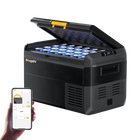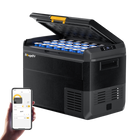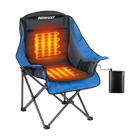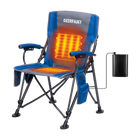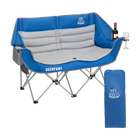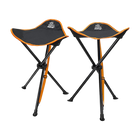From Roofs to RVs: How Peel-and-Stick Solar Panels Are Powering Freedom
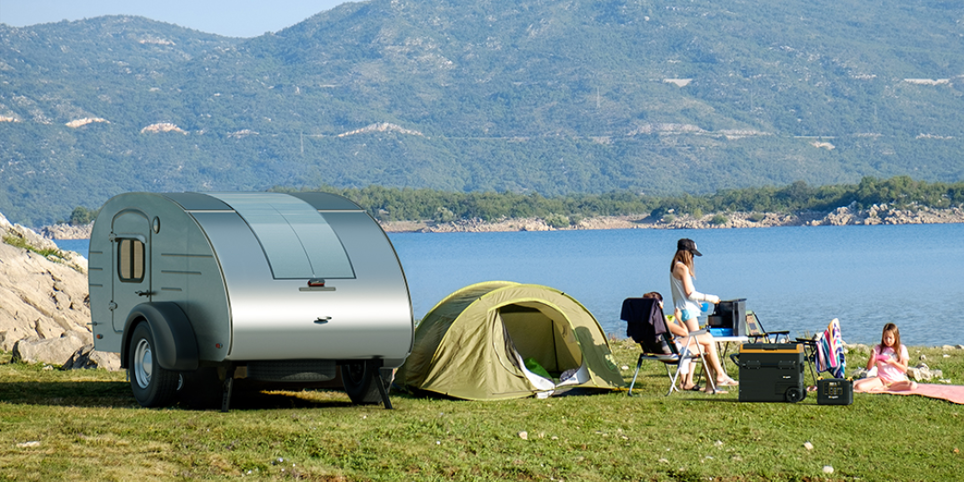
Solar energy has come a long way from bulky rack-mounted panels on rooftops. One of the most exciting developments is the advent of “peel-and-stick” solar panels—thin, flexible, adhesive-backed modules that open up a host of new installation possibilities. Let’s dive into what they are, how they work, their benefits and limitations, and how you could use them in combination with trusted brands like BougeRV.
What exactly are peel-and-stick solar panels?
Peel-and-stick solar panels are ultra-thin photovoltaic (PV) modules engineered to adhere directly to surfaces without the need for heavy mounting rails or elaborate hardware. Early research described this as “decal-like solar panels that can be peeled off like band-aids and stuck to virtually any surface.” They typically utilize flexible thin-film technologies or flexible substrates that allow mounting on curved, irregular, or lightweight surfaces.
In practical terms, what you’re seeing is: a thin film of photovoltaic material (often CIGS – copper indium gallium selenide – or other thin-film compounds) laminated onto a flexible backing with adhesive. The installer simply peels off a protective layer and sticks the panel to a clean surface.
Why peel-and-stick? Advantages at a glance
Here are the major benefits:
-
Lightweight & minimal hardware: Because there’s no heavy glass, thick frames, or bulky racks, these panels are much lighter, reducing structural load.
-
Flexible surface mounting: They can conform to curved or irregular surfaces — perfect for boats, RVs, tents, or building facades.
-
Faster installation: The adhesive backing means fewer drills, fewer roof penetrations, fewer mounting parts — saving time and reducing potential water-intrusion points.
-
Aesthetic & low-profile: Because they blend into surfaces (especially on curved or low-rise structures), they are less visually intrusive than raised racks.
-
Ideal for off-grid, mobile, or retrofit applications, the peel-and-stick approach allows PV on vehicles, caravans, boats, or temporary shelters, where traditional mounting would be too heavy or complex.
The trade-offs: What to watch out for
No technology is perfect, and peel-and-stick solar panels have some important considerations:
-
Efficiency may be lower: Flexible and thin-film technologies typically lag behind the highest-efficiency rigid crystalline silicon panels.
-
Durability & warranty: Because they omit some of the robust framing and glass protection of traditional panels, they may have shorter effective lifespans or different degradation profiles. For example, flexible panels often come with shorter warranties.
-
Surface and adhesive suitability matter: The substrate must be clean, structurally sound, and capable of maintaining adhesion. If the adhesive fails (due to temperature shifts, moisture intrusion, or substrate movement), performance suffers.
-
Angle and shading limitations: When stuck flat or on curved surfaces, you might lose the ability to tilt or orient the panel optimally towards the sun.
-
Repair and replacement considerations: If a panel is damaged or fails, peeling it off may be more labor-intensive or disruptive than replacing a framed module on rails.
Practical use-cases: Where peel-and-stick shines
Here are scenarios where this technology really makes sense:
-
RV, van, or camper rooftops: When your roof is curved or you need a low-profile, wind-resistant solution, peel-and-stick is the ideal choice.
-
Boats or watercraft: Weight and flexibility are big constraints on boats; adhesive solar panels fit nicely.
-
Retrofit on low-load buildings: Older roofs or lightweight structures that cannot tolerate heavy rack-mounted systems.
-
Pop-up shelters or temporary installations: For event tents, mobile clinics, and camping structures, where you want solar power without permanent mounting.
-
Facade or architectural integrations: On curved walls, awnings, or surfaces where conventional panels wouldn’t fit.

How to evaluate and install them: Best practice checklist
If you’re considering peel-and-stick solar panels, here’s what to look for and steps to follow:
Before purchase
-
Check the panel’s rated wattage, weight per unit area, bend radius (if flexible), and adhesive backing specs.
-
Check warranty: panel output guarantee (e.g., 80 % after 25 years), and adhesive life/lifetime.
-
Ensure compatibility with your system voltage (e.g., 12 V, 24 V, or higher).
-
Evaluate substrate material (metal roof, fiberglass, wood, composite) and ensure it is suitable for adhesive mounting.
Installation steps
-
Clean the surface thoroughly (remove dust, oil, rust, loose paint) and allow to dry.
-
Verify the surface can handle the long-term loads (wind, thermal expansion).
-
Peel the backing, align the panel, and press firmly to ensure good adhesion. Use rollers or pressure tools if recommended.
-
Connect the panel to your charge controller or inverter with proper wiring, fusing, and safety measures.
-
Monitor the first few hours to verify power output and check for any signs of lifting or air bubbles.
-
Perform a periodic inspection of the edges and adhesive seal for wear or delamination.
Maintenance tips
-
Clean the surface occasionally to maximize output (dust, bird droppings reduce efficiency).
-
Inspect edges annually to ensure adhesion remains intact.
-
Ensure wiring, connectors, and sealing remain weather-tight.
BougeRV Self-Adhesive Flexible Solar Panels
At BougeRV, we believe that solar power should be simple, flexible, and accessible to everyone. That’s why we created our Yuma Series — a line of self-adhesive thin-film flexible solar panels that perfectly embody the peel-and-stick concept.
Our Yuma 200W CIGS Thin-Film Flexible Solar Panel with Tape is designed with a pre-assembled adhesive backing, which eliminates the need for brackets, drilling, or complicated mounting systems. Simply peel, stick, and start charging — it’s that easy.
Thanks to advanced CIGS thin-film technology, our panels are lightweight, ultra-flexible, and can even be rolled up for compact storage or transportation. Whether you’re powering an RV, boat, truck, tent, or rooftop, BougeRV panels adapt seamlessly to curved or uneven surfaces without sacrificing performance.
In short, we’ve engineered our self-adhesive solar panels to deliver reliable power wherever your adventures take you — combining efficiency, portability, and effortless installation in one elegant solution.

Why this matters for you (and your off-grid adventures)
Given your interests in portable power, vehicles, and flexible solar setups, think about these advantages:
-
If you have an RV, van, boat, or soft-structure roof (like your earlier interest in “400W solar panels” and portable systems), using peel-and-stick panels like those from BougeRV enables installation where traditional rigid panels might not fit.
-
The adhesive solution means fewer roof penetrations—less risk of leaks or structural compromise.
-
Because they’re lighter, you can mount more wattage (or more easily) without overloading your structure.
-
The aesthetics and low-profile nature are ideal when you want a clean look or need to maintain low clearance (important in vehicle operations).
-
Even if you’re supplementing a rigid solar system, these flexible adhesive panels can provide “fill-in” power in tricky spots—vertical surfaces, curved corners, or shaded areas.
Final thoughts: Is peel-and-stick right for you?
If I were to summarise when this technology is a good fit:
-
You have a non-traditional surface (curved roof, boat hull, trailer side, tent fabric) where conventional mounting is difficult.
-
Weight or structural loading is a concern—lighter is better.
-
You value quick, low-profile installation with minimal hardware.
-
You’re willing to accept that efficiency or lifespan may be somewhat lower compared to premium rigid panels.
Conversely, you may want to hold off or choose a conventional rigid panel system if:
-
You’re installing a full-scale residential rooftop system where maximum efficiency and durability matter most.
-
You expect heavy mechanical loads (hail, snow, large thermal swings) and want the thick-glass, framed robustness of rigid modules.
-
You need long-term output (25 + years) and want the most proven track record.
Given all that, if your use case involves mobile, off-grid, or unconventional surfaces (like RVs, campers, tents, boats), then peel-and-stick solar panels are very compelling. And when you tie in a supplier like BougeRV, which already offers self-adhesive flexible thin-film models, you have a real-world option to explore. For a limited time, enjoy an extra 7% off for BougeRV solar panels with code: SPNARY07 at checkout (Some solar panels can't use this discount). Don’t miss the chance to save while going solar!
FAQs
1. Do peel-and-stick solar panels really stay in place?
Yes. High-quality panels like BougeRV’s Yuma series use industrial-grade adhesive designed to endure wind, rain, and temperature changes when installed on clean, solid surfaces.
2. Can I remove or reposition them later?
They can be removed carefully, but the adhesive is meant for long-term bonding. Reinstallation may require a new adhesive kit or surface preparation.
3. Are they as efficient as traditional panels?
Not quite. Flexible solar panels usually have lower efficiency than traditional rigid panels because they use thin-film or lightweight materials instead of thick crystalline silicon cells. On average, flexible panels convert about 10–15% less sunlight into electricity.
However, their lightweight design, easy installation, and ability to fit curved or uneven surfaces often make up for the difference. For mobile setups like RVs, boats, or off-grid adventures, flexible panels—such as BougeRV CIGS flexible solar panels—offer the perfect balance of performance and convenience.
4. Can I walk on peel-and-stick solar panels?
BougeRV flexible solar panels are designed to be tough and durable. We’ve tested them through high-pressure water flushing, puncture resistance, and even tire rolling tests, and they continued to perform well. That said, it’s best not to walk on them regularly, as repeated pressure could cause small cracks or reduce efficiency over time. In short, our panels can handle it — but a little care goes a long way for lasting performance.
5. Are BougeRV peel-and-stick panels waterproof?
Yes, BougeRV’s flexible panels are weather-resistant and built for outdoor use, including marine and RV environments.









